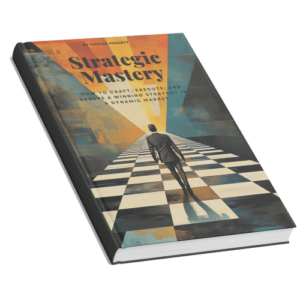
The DIY Entrepreneur: Assembling Success Without an Instruction Manual
Starting a business is a lot like trying to assemble IKEA furniture without the instruction manual. You’ve got a pile of oddly shaped pieces, a bag of mysterious screws and bolts, and a vague picture of what the end product is supposed to look like. But how do you get from a heap of parts to a functional piece of furniture—or in this case, a successful business?
You lay out all the pieces on the floor, scratch your head, and think, “Where do I even begin?” There’s no step-by-step guide, no numbered diagrams, and certainly no helpful little cartoon guy pointing the way. It’s just you, the parts, and the determination to make something out of them.
So you start experimenting. You try fitting piece A into slot B. Doesn’t work? Try piece C. Maybe that fits. You might put something together only to realize it doesn’t look right, or it’s wobbling precariously. Back to the drawing board. You take it apart and try again.
This process isn’t efficient, and it’s definitely not smooth. But with each attempt, you understand a little more about how the pieces fit together. You start recognizing patterns, seeing which parts are crucial and which are optional embellishments.
In entrepreneurship, it’s much the same. There’s no universal manual that tells you exactly how to build your business. Sure, there are books, courses, and mentors, but at the end of the day, your business is unique—just like that custom bookshelf you’re trying to assemble.
You’ll face mismatched parts: limited resources, unexpected challenges, and gaps in your knowledge. You’ll have to improvise, maybe even create your own tools. That Allen wrench they provided? Lost it ages ago. Time to dig through the toolbox and find something that works.
And let’s not forget those extra screws left over at the end. In furniture assembly, they make you question whether you did it right. In business, there’s always that lingering doubt—did I miss something important? But sometimes, those extra screws are just that—extras. Not every piece needs to fit into your puzzle.
The key is persistence. You keep at it, not because you have a guarantee of success, but because you’re committed to seeing it through. You embrace the trial and error, understanding that mistakes aren’t setbacks—they’re learning opportunities.
So what’s the takeaway?
First, start with what you have. Don’t wait for perfect conditions or all the answers. Lay out your pieces and dive in.
Second, embrace the learning process. Each misstep brings you closer to understanding how it all fits together.
Third, be willing to improvise. Use the tools at your disposal creatively. If something’s not working one way, try another.
Remember, the most satisfying accomplishments often come from the most challenging projects. When you finally tighten that last screw and step back to see the finished piece—knowing the effort, frustration, and creativity it took to get there—the sense of achievement is unparalleled.
So if you find yourself surrounded by scattered parts and no instructions in sight, take a deep breath. You’re in the midst of the real entrepreneurial journey. Piece by piece, screw by screw, you’re building something uniquely yours.
Because in the end, success isn’t about following someone else’s manual—it’s about writing your own as you go.













Recent Comments